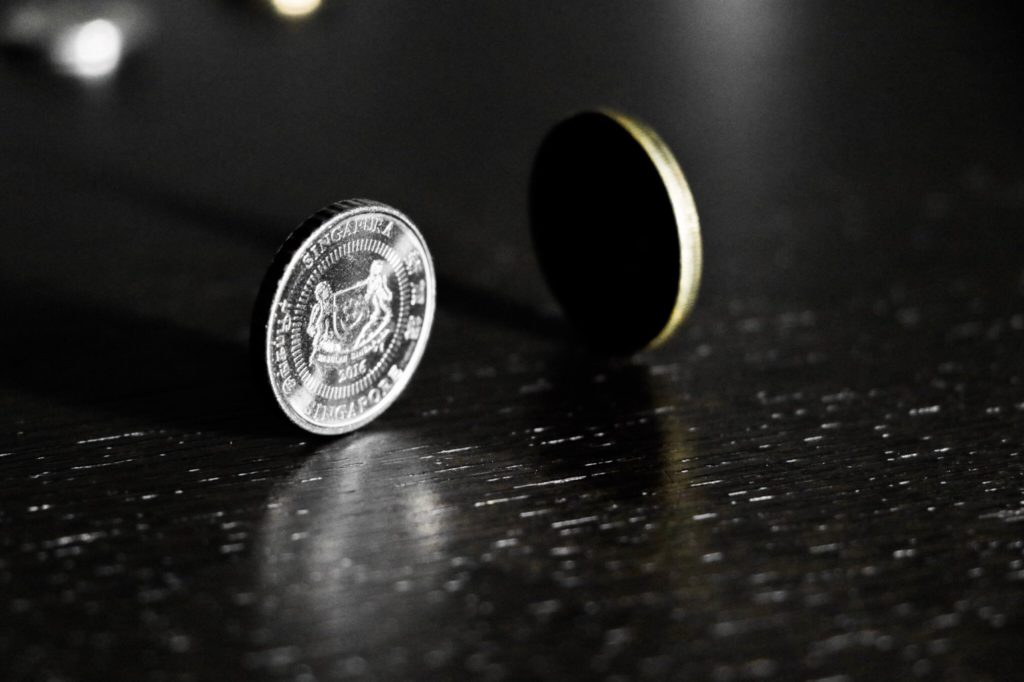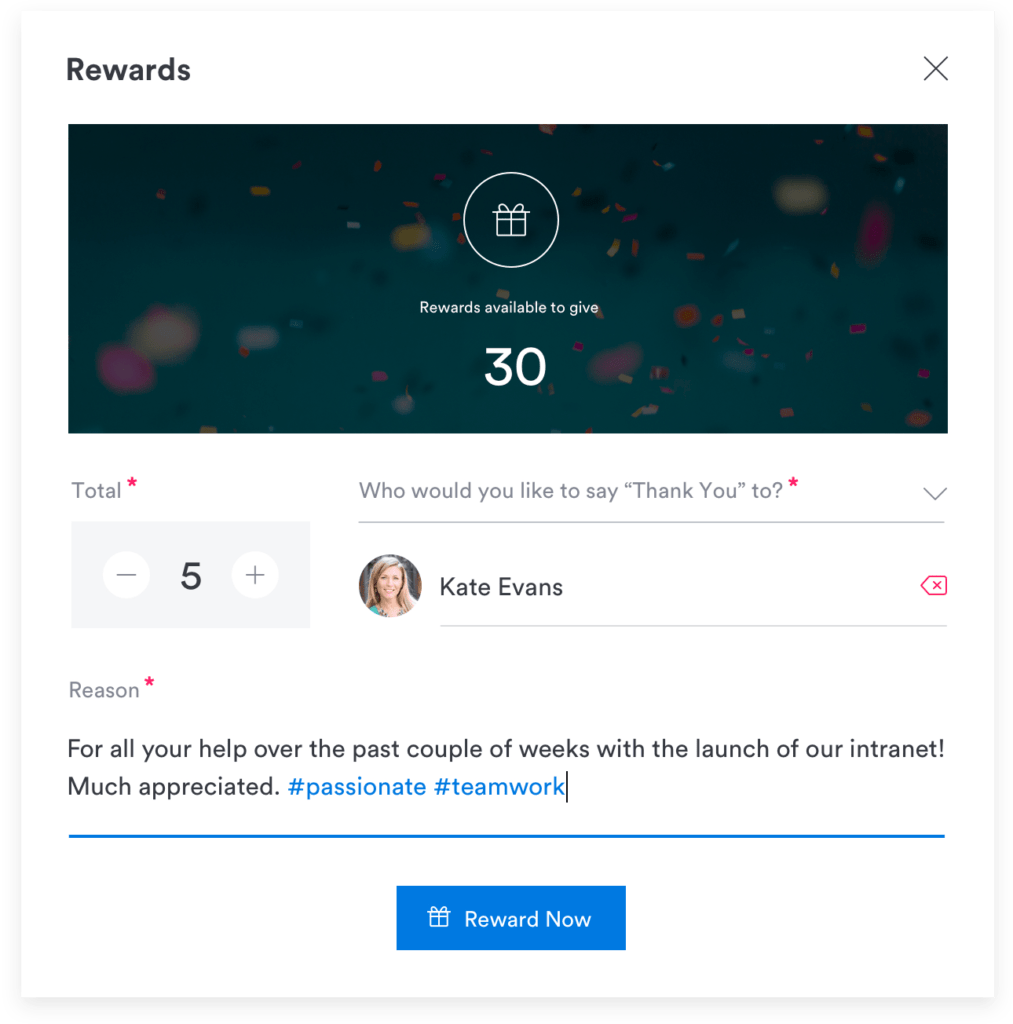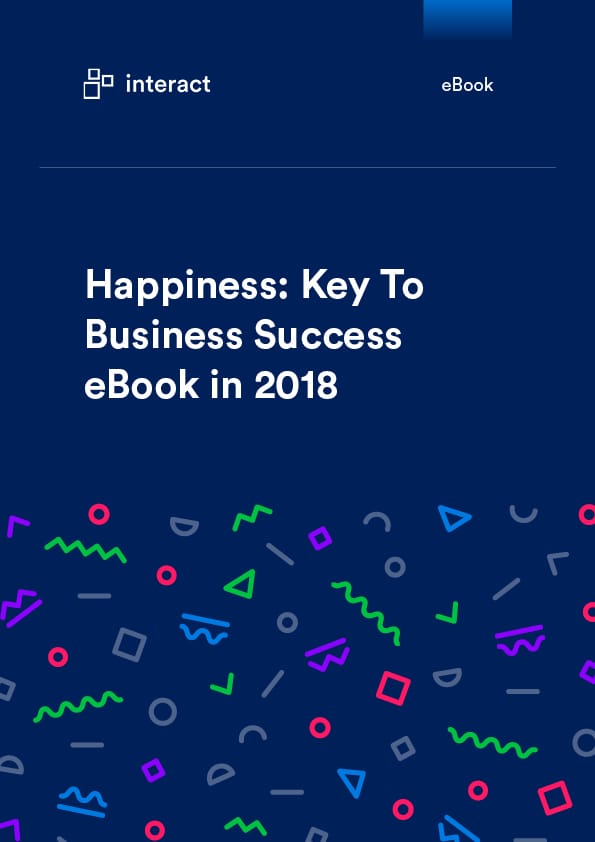Recognizing employees isn’t enough – and here’s why

The value and importance of employee recognition is pretty much undisputed by managers these days. But we’re not going far enough: and there’s a 20% difference in productivity at stake. Where are we failing?

“Well done on securing that new client, great pitch.”
“Thanks for all your help and input.”
They’re two statements that seem, at a first glance, to be doing the same thing: giving some positive feedback. But in reality, they’re very different. The first is giving recognition – the later, appreciation.
The two terms often get used interchangeably, particularly in the workplace. However, from an employee perspective, they bring a whole host of different benefits that have a huge impact on those all-important business KPIs: retention, productivity, innovation, engagement. And research shows we’re picking up on the recognition part, but we’re failing miserably on the appreciation side.
If it has the potential to play such a significant role in terms of both individual and business performance, how can we be missing it? How can we shift the focus from recognition, to appreciation?
Two sides of the same coin?

First, let’s be clear. What’s the difference?
Recognition – formally defined as ‘appreciation or acclaim for an achievement, service, or ability’ – is positive feedback based on results.
It’s motivating, but it’s also finite. It’s specific. It’s a ‘well done on hitting target’, or ‘great work on the website project’. In a traditional hierarchal structured organization, it also tends to have to come from the top-down in order to have any weight.
Appreciation is more about the person and who they are, rather than the result(s) they’ve achieved.
Formally, it’s “recognition and enjoyment of the good qualities of someone or something.” It’s on-going, long-term and it has a huge role to play in building loyalty, respect and a positive culture. It’s a ‘thanks for all the effort you’re putting in,’ or ‘we’d be lost without your great negotiation skills’. You can give appreciation without any results – in fact, you can even show appreciation even in times of failure.
Happiness: The key to business success in 2019
Admittedly, you can understand why the line blurs between the two. Even the definition of ‘recognition’ uses the word ‘appreciation’, and vice-for-versa; both are a form of positive enforcement. However, it’s this very mindset of failing to see the difference that could be costing us.
To put the value of the difference into context, a UC Berkley study revealed that:
- When staff feel recognized for the work they do, they’re 23% more productive; however,
- When staff feel valued and appreciated, they’re 43% more productive.
That’s a 20% difference we can’t afford to ignore.
The ripple of appreciation

This isn’t to say that recognition isn’t important: it’s an essential component of effective management. It’s the practice of rewarding behaviours you want to see repeated and when you have staff pulling out all the stops to reach a goal, it’s a much-needed acknowledgment of the effort they’ve put in.
Formal recognition programs can also focus staff on pursuing and attaining defined objectives: having that sense of ‘something to aim for’ can prove hugely motivating. This is a premise that feeds particularly into the sales environment, when targets are traditionally coupled with formal recognition rewards – financial or otherwise. Having the understanding that achieving 100% of target will get me this bonus, but going above and beyond to smash 125% adds a weekend trip away, is an ideal format for those who are target-driven.
However, studies also show that when staff are asked why they left their job, 64% state it was because they didn’t feel valued or appreciated. That’s a bigger proportion than those stating pay, progression or culture.
Giving a proverbial thumbs up doesn’t just have benefits for the person on the receiving end either. When we show someone an act of kindness or appreciate them, it raises serotonin levels in both peoples’ brains. It literally, from a physiological perspective, makes us both feel better.
Appreciation, unlike formal recognition, is also something anyone in an organization can do; and a recent study shows that when employees (at any level) give that adhoc appreciation, their own engagement score increases by 26%.
Happiness: The key to business success in 2019
Then, there’s the appreciation domino effect: the receiver is more likely to ‘pay it forward’, and not just to the person who gave them the original boost. It creates a shift in the entire business culture.
So, if it can impact on everything from retention and engagement to creating a more altruistic culture, why aren’t we doing it more?
Appreciation: how do we deliver the allusive silver bullet?
While the value of recognition has seen a surge in formal programs in recent years, the practice of actively or consciously expressing appreciation has largely remained untouched.
It seems odd that something we seem to need, as employees or even as human beings, could be so hard to give and receive.
Admittedly, it’s a trickier concept to weave into a business because it isn’t formal: and that’s partly the point. Appreciation is personal, continuous, adhoc. It’s not really something you can quantify, measure or keep tabs on. There’s no ‘one size fits all’ solution that we can say, ‘hey, managers – you need to do this once a week.’ It’s something that has to be embedded into the very culture of a business, at every level.
The trouble is that by nature, as soon as we start to try and consciously introduce it? It becomes a little… awkward.

There are some individuals who seem, by nature, to be pretty at ease with dishing out the compliments and giving a pat on the back without giving it a second thought. For others, though, it’s not something that comes instinctively or naturally. And when you make a conscious effort, there can be a tendency to overthink it. It comes out disingenuous, false-sounding: and achieves the very opposite to the desired effect.
Ironically, we’re also pretty terrible, as human beings, at receiving compliments.
In his TED talk on the power of appreciation, Mike Robbins makes a great case for the human condition that makes us seemingly incapable of being gracious with a compliment.
“How many of you notice that from time to time, when someone gives you a compliment? You get a little funny about it. You ever notice that?
“OK, do you know what you’re supposed to say when someone gives you a compliment? ‘Thank you’. And then? Shut your mouth. Literally. You don’t have to say anything after else the ‘thank you’. Usually, if you listen to yourself and other people, whatever gets said after the thank you? Is almost always weird and insincere.
“It is. Sometimes we give a compliment right back to the person and sometimes we mean it, but sometimes it’s completely inappropriate. It would be like if you came up to me after this and said, ‘hey Mike, that was a great TED talk and I said, ‘you too!’…’ That’s weird.
“But even worse, we argue with people. Someone gives you a compliment and you say, ‘no no no, it was bad, it was terrible!’. We start undercutting ourselves down. Don’t do that. It’s literally like someone handing you a birthday gift and you saying ‘uh, what’s wrong with you, I don’t deserve this!’ and throwing it on the floor. You ruin the gift, you offend the giver, and you don’t get many more gifts that way.”
Since hearing this talk, it’s something I’ve noticed myself and others doing continuously, if subconsciously, every time a show of appreciation comes their way. Both the giver and receiver are left feeling awkward, uncomfortable even. And it doesn’t exactly invite a repeat.
It seems odd that something we seem to need, as employees or even as human beings, could be so hard to give and receive. Making it a habit in our businesses, then, presents us with an even greater puzzle.
Happiness: The key to business success in 2019
‘Thanks mate’ – introducing day-to-day appreciation
One of the most effective tools I’ve seen implemented is peer-to-peer recognition. Yes, I’m going to be a little biased: but we use this approach at Interact and it’s one of the great parts of our culture that I love. It’s also the one area of our own intranet that is used above any other feature.

Admittedly yes, it can be a formal tool when used by senior management. But by giving autonomy and freedom to staff, who are given a quota of ‘donuts’ (a virtual ‘currency’ to award to others) each month to ‘spend’ as they see fit, it becomes a crucial part of day-to-day appreciation and thanks in the business.

Why does this work so well?
For starters, it embeds our values as a business – you can see that in the use of hashtags, the #WeFixThings, the #WePutPeopleFirst. That keeps them front-of-mind, helps embed them into the day to day and prevents them becoming some corporate spiel hosted on an intranet page no-one visits after induction. In fact, when creating our new values only last year, one of the research stages saw us look at donuts handed out on the intranet over the previous 12 months.
But it’s also the fact that anyone can give thanks – and everyone can see it.
It doesn’t have to be for big things, for anything results-driven (I’ve seen more than one donut awarded for bringing in cake, making a cup of tea or swapping over a car parking spot…) or even, necessary, for anything specific (winner for this one: ‘thanks for just generally being you and everything you do’.) When it’s there in the public domain, it’s motivating for others to give demonstrations of appreciation also, creating a chain reaction.
In our digital age, it also offers almost a ‘safe’ channel and way to dish out the compliments, without the awkwardness that seems to come with face-to-face interaction.
That’s not to say that it should replace it; however, when staff are more comfortable from the confines of a keyboard or communicating via social media, it introduces a way to confidently show appreciation without the risk of coming across as disingenuous.
Introducing appreciation into management style
While peer and team appreciation are crucial, we can’t escape the fact that a thanks from your manager, supervisor or someone at the top carries significant weight. Great leaders balance both appreciation and recognition to nurture and gain the most out of their staff.
One of the first steps is to understand the difference and why it’s important. Introducing the conversation into management training is a great first step for simply making us more conscious. This way, we can reiterate that appreciation is about supporting your people in an ongoing fashion; not just their outcomes or results, but the attributes and contributions day-to-day that make them a valuable part of the team.
Mike Robbins actually suggests setting a calendar reminder for managers to practice this if it doesn’t come naturally. This doesn’t mean that every Friday at 3pm I give a shout out to Sally for all her hard work this week. It simply means that there’s a regular ‘trigger’ to get me thinking about who I appreciate and why; that, in turn, will get those ‘compliments’ flowing more easily.
Great leaders balance both appreciation and recognition to nurture and gain the most out of their staff.
Encourage leaders to mix it up. Written, personal, virtual, face-to-face or public: there are any number of ways to show appreciation. Perhaps its grabbing that member of staff who’s been pulling out all the stops to meet a deadline a cup of coffee in the morning; perhaps it’s a shoutout in the team meeting, or a simple ‘I just want to say that you make a huge difference to the team. Thanks,’ in your next one-to-one.

Appreciation is most effective when it’s timely – and delivered when the recipient is open to it. There’s absolutely no value waiting until you notice one staff member is showing signs of disgruntlement or low morale, and then piping up with ‘hey – thanks for the great ideas you put forward last week!’. It won’t be well-received, and motives will be questioned.
Ultimately, we could all do with appreciating and recognizing each other more.
Despite the importance, Gallup found that only 1 in 3 US workers strongly agreed they’d received recognition or praise for doing good work in the previous 7 days (2018).
Feeling appreciated is a fundamental human need, in any relationship – and not just in the workplace. Perhaps getting it right in the office can then translate into other areas of our lives: a ripple that keeps on giving.

